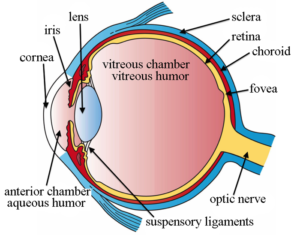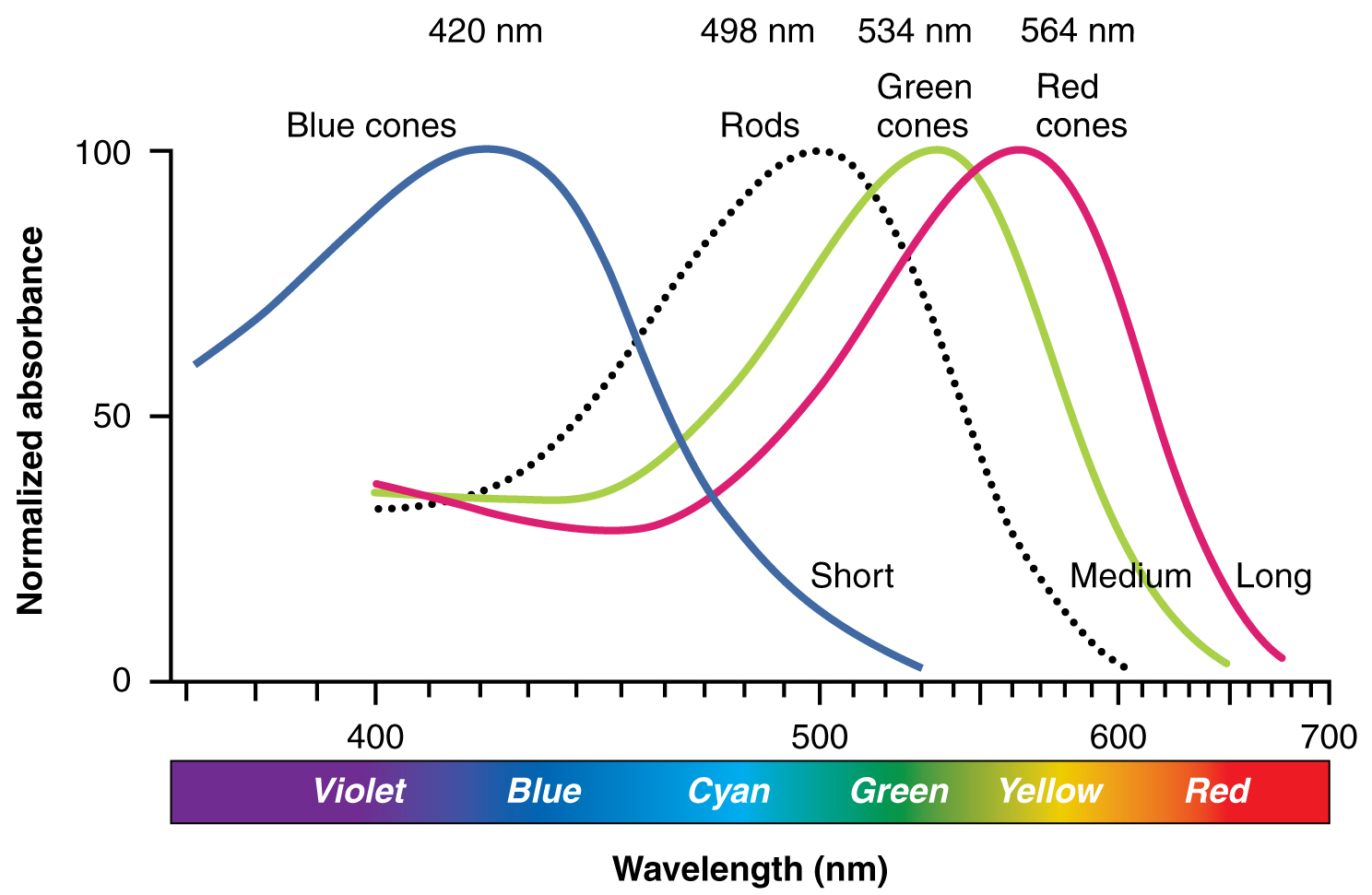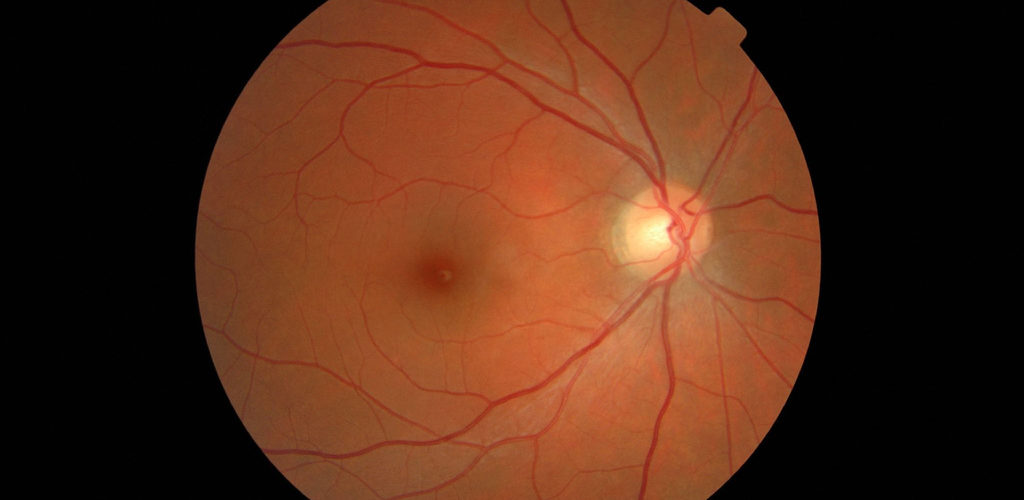The retina is a specific nerve tissue on the inside of the eye. In general it could be described as a projection surface for our surrounding.
It is responsible for transferring arousal – caused by light stimuli – to regions of the brain.

When the light strikes our eyes it takes it’s way through the cornea, the lens, the vitreous body and finally the retina of the eye. To understand the task of the retina better, we should take a look at the construction of it. It consists of different cell layers with specific functions.
 The light first passes the cell layers and impinges upon the pigment cells which are responsible for light-absorption. Robs and cones are the so called photo-receptors. They transform light into nerve impulses, which will be transferred to the brain. There are two different types of photo-receptors. The robs are specialized for seeing at low lightning while the cones are
The light first passes the cell layers and impinges upon the pigment cells which are responsible for light-absorption. Robs and cones are the so called photo-receptors. They transform light into nerve impulses, which will be transferred to the brain. There are two different types of photo-receptors. The robs are specialized for seeing at low lightning while the cones are
responsible for seeing colors. One eye has about 120 Million robs and 60 Million cones. People without robs are night-blind.

The different wave-lengths of the light stimulate the cones with a distinct intensity. Depending on the intensity of the stimulation, the red, green or blue cones are irritable.
This causes the sensory impressions for color in many different nuances in the brain.
The robs are more photosensitive than the cones, which is the reason why they are also able to work in the dawn when the signals for the red, blue and green cones cease with decreasing light. The so called macula is the area where humans have the biggest visual acuity. Due to the fact that it consists only of cones it is not possible to see things in the dark, when we focus on them. If we don’t focus on them exactly, it is possible, because the robs in the edge region are working.
Horizontal cells pool the information of the photo-receptors and strengthen them. Bipolar cells simply transfer this information to the amakrine cells, which interconnect them and strengthen their information as well. The axons of the ganglion cells – the cell layer behind the amakrine cells – build the visual nerve. It transfers the light-information to the brain, where it can be processed into a sense impression.
– by Julia S. –
source: https://upload.wikimedia.org/wikipedia/commons/9/94/1416_Color_Sensitivity.jpg
https://www.brillen-sehhilfen.de/auge/netzhaut-retina.php
https://de.wikipedia.org/wiki/Netzhaut
https://lehrerfortbildung-bw.de/st_digital/medienkompetenz/gestaltung-farbe/physiolo/vorgang/

